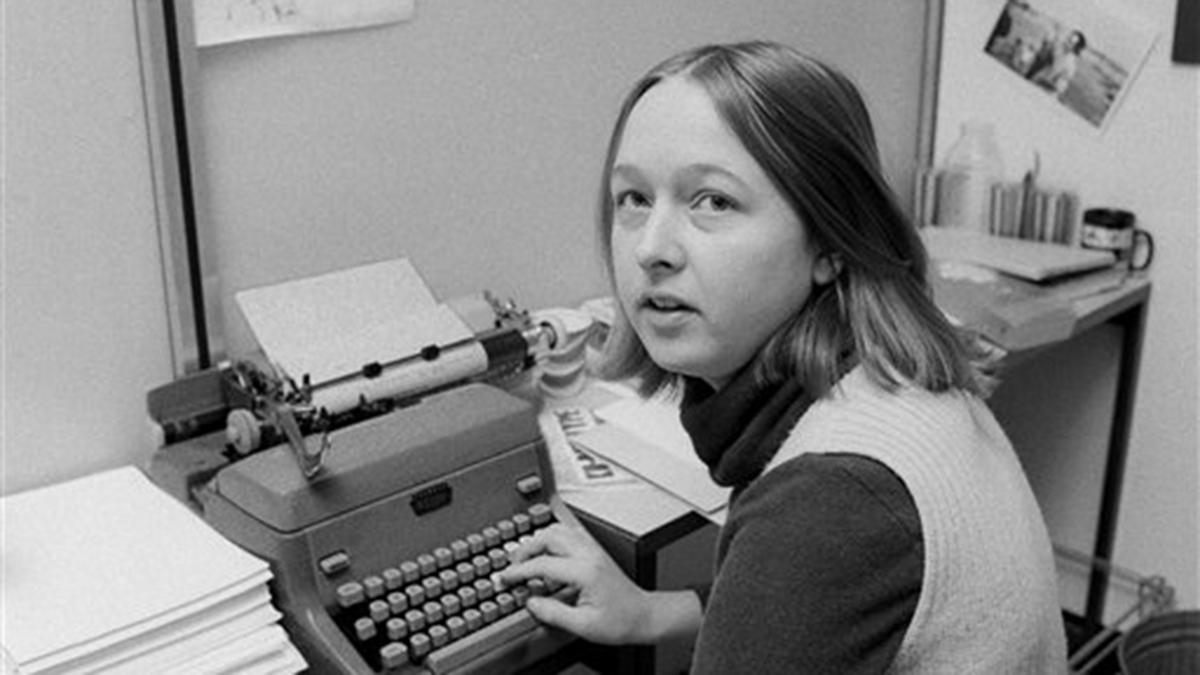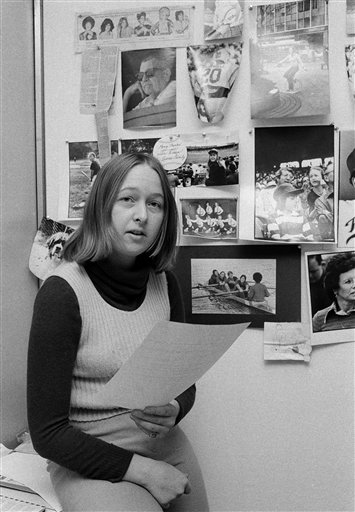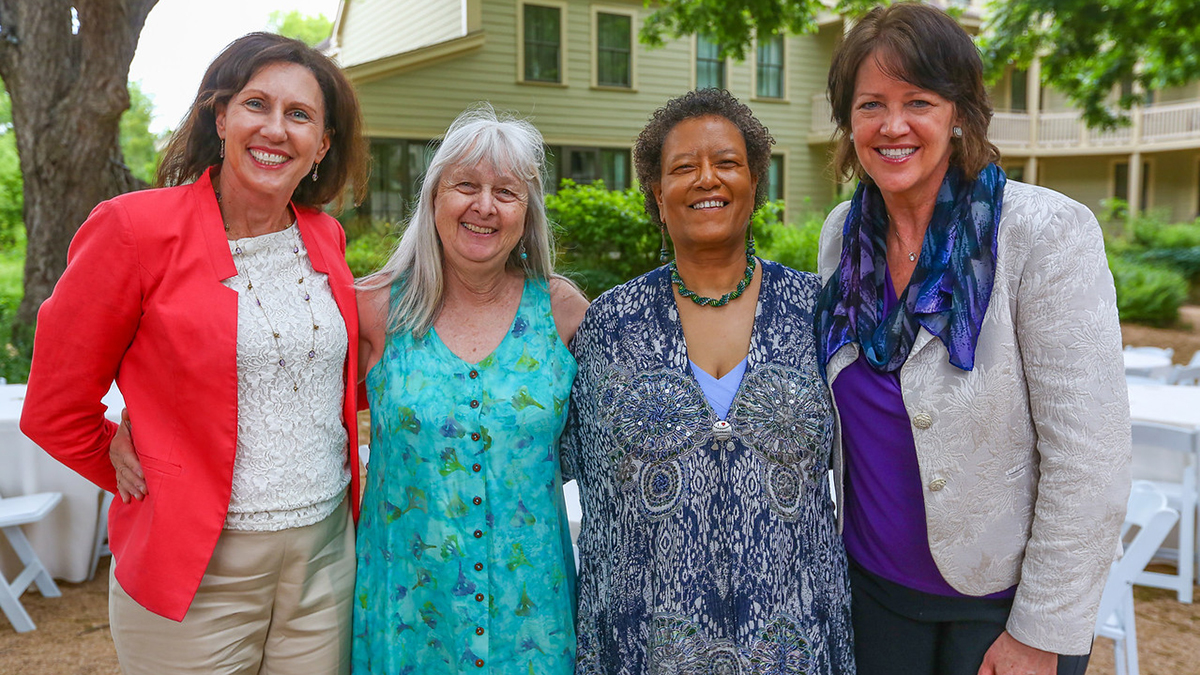40 years on: Ludtke v Kuhn helped change the face of sports coverage forever

Forty years ago, Sports Illustrated, on behalf of writer Melissa Ludtke, sued Major League Baseball to allow female sports writers access into clubhouses like male sports writers. Since that monumental court decision, clubhouses - and front offices, leagues and coaching positions - have opened up for women. Ludtke looks back at what being a trailblazer meant in those days and the days that have come after.
Being a woman – OK, the only woman – reporting baseball full time in the mid-1970s, I dressed with gender in mind. My ballpark outfits were feminine frocks with flattening bodices, puffy sleeves and hints of lace accentuating flowery prints. The full skirts of my Laura Ashley dresses fell discreetly below my knees so when I was talking with managers in dugouts I crossed my legs with impunity.

Today: More than 40 years ago, Melissa Ludtke was just trying to do her job when Major League Baseball denied her access to the clubhouse. Her lawsuit changed the way sports is covered forever.
Though my look was more maiden than model, my dresses were expressions of femininity in a place that sucked such feelings out of me. I was desperate to prove I belonged in this hypermasculine world, and my outfits helped me maneuver between mimicking how male sportswriters did the job and carving out niches of comfort all my own.
My mom had passed her love of baseball down to me, and in my mid-20s I had my dream job as a baseball reporter for Sports Illustrated. So I knew the game didn’t belong to men, even if they made me feel it did.
[beauty_quote quote='My mom had passed her love of baseball down to me, and in my mid-20s I had my dream job as a baseball reporter for Sports Illustrated. So I knew the game didn’t belong to men, even if they made me feel it did.']
Most male writers pegged me as an invader of their territory and worried that a cavalcade of reporters who looked like me were trailing close behind. With their strategy of stopping me so the rest would not follow, everything I did, including what I wore to work, had to befit my situation. Nothing I wore could be construed as having a come-hither look. To show cleavage, of which I had little, invited the male gaze from these men who called me “girl,” even though I was in my mid-20s.
They challenged my morality by intimating that I wanted to be inside locker rooms to leer at naked ballplayers. Why else, columnists asked, would I take Major League Baseball to federal court to gain equal access to interview players in the locker room? But if I won, these men asked, ad nauseam, could they be with tennis star Chrissie Evert in her locker room? As the men played out their fantasies of glimpsing naked women, they flicked away my pressing need for access as they would a bothersome bug.

Of course, the men knew that no reporter goes inside of tennis locker rooms, but accuracy wasn’t their point. Unlike baseball, hockey, football and basketball, all of the male and female writers ask questions of tennis players in an interview room, a.k.a. equal access.
The men’s aim was to trivialize my demand for equal treatment, a strategy they paired with expressing displeasure with our presence and presenting us with difficulties in the hope that we’d give up and go away. That writers back then had bylines – and often their photos at the top of columns – modulated what they said about us in public, but their message got through: Stop your comical antics and leave if you don’t like the way things are.
Today, the anonymity of social media has released the brakes that once restrained the insults hurled at women reporting on sports and kept them tolerable, albeit distasteful. Now men who are angry at women’s intrusion into sports explode in hideous social media bursts of misogyny, though no longer are fellow sportswriters leading the charge. When those men weigh in now, it’s usually in support of besieged female colleagues.
Four decades after U.S. District Court (Southern District of New York) Judge Constance Baker Motley ruled in my favor in Ludtke V. Kuhn, tensions remain strong between those who regard sports as a male domain and those who see female athletes as men’s equals. At the time of my legal action, Title IX was being introduced as a new, effective lever for achieving gender equity in sports, and these two strides – in sports media and competitive athletics – provided reason to trust that significant enduring breakthroughs were on the horizon.
Since then, participation in sports surged among girls and women, their competitiveness rose and sports media experienced an influx of women. Yet decades later, men still hold the positions of decision-making power in sports, and, as we’ve seen, our ability to change societal attitudes about gender lags decades behind women’s responses to their legal gains.
Despite the development of several women’s professional sports leagues and increasingly vigorous collegiate competition, women’s games receive minimal or no coverage except during Olympics, when beach volleyball disproportionately eats up TV time. (Could the women’s skimpy outfits account for this?) Sports coverage is “by men, for men, and about men,” as sports media researcher Toni Bruce put it in her 2013 essay, “On Women and Femininities.” In U.S. sports media, women barely exceed 10 percent of editorial jobs in print – 90 percent of sports editors are men, 88.5 percent of reporters and 83.4 percent of columnists – and about 5 percent in broadcast. On TV, the women are sidelined too much and sit at broadcast booth microphones too little, though those numbers are rising slowly.
[beauty_quote quote='These days, when women sports reporters express opinions, they know that act is likely to trigger misogynistic comments to rain down on her. Still, they charge ahead, speaking out.']
As pioneering women in the 1970s, we were left on our own to figure things out. Today, women sports reporters organize and stay in touch. They wrestle with their shared challenges at Association for Women in Sports Media conferences, and AWSM has their backs when gender-related incidents happen, as sadly they do. At gatherings like this April’s “Women in Sports Media” conference at the University of Maryland, women sports reporters from today and yesterday shared experiences. I spoke there, and after a day of listening I emerged with utmost admiration for the persistence of today’s female reporters in pushing past circumstances that revolve around their gender and in pushing back against the virulent online misogyny they encounter.
In the 1970s, on my own and working in places ruled and inhabited by men, I didn’t have their courage. Yes, Time, Inc.’s lawyers, led by F. A. O. Schwarz, Jr., fought the case that bears my name, Ludtke v. Kuhn, but I didn’t have the guts to respond directly to criticism aimed at me. I gave speeches, if invited, did interviews, when asked, and wrote a few op-eds, when occasions called for my voice to be heard. But mostly I reined in my frustrations and anger as I carried on, simply trying to perform my job.
These days, when women sports reporters express opinions, they know that act is likely to trigger misogynistic comments to rain down on her. Still, they charge ahead, speaking out. Then, often with humor, at times with no-nonsense rage, they push back in what amounts to social movement activism, and it makes a difference that they do.

For the few women at microphones in broadcast booths – Jessica Mendoza, Beth Mowins, Suzyn Waldman, Doris Burke, to name a few – just speaking can spur hate-filled catcalls from men. When Vicki Sparks became the first British woman commentator on a live World Cup game, the Washington Post headline about her debut read: “I prefer to hear a male voice’: Female Commentators Find Harsh Judgment at World Cup. However, the good news is within hours the former soccer star who’d complained on Good Morning Britain about Sparks’ high-pitched voice, Jason Cundy, reacted to public outrage at his sexist critique by apologizing on Twitter.
Then there was the on-air kissing and groping of women reporters at the World Cup. In its story, “3rd Female Journalist Sexually Harassed on Camera,” NPR played a video of Brazilian journalist Julia Guimaraes thwarting the man who came at her poised for a kiss while she was on air. "Don't do this! I don't allow you to do this, never, OK? This is not polite; this is not right. Never do this to a woman, OK? Respect,” she shouted at him, and he’s heard apologizing. Julieth González Therán, the Colombian reporter who was groped on camera, wrote on Instagram: "We do not deserve this treatment. We are equally valuable and professionals. I share the joy of football, but we must identify the limits of affection and harassment.”
Four decades removed from the days of players’ pranks and sexual taunts greeting our locker room arrivals and our fellow reporters’ sexist “humor,” we’re living in a time that is different in many ways, yet achingly familiar. Women enter sports media in far greater numbers than in previous decades, yet they depart much sooner than men do, just as they always have. In part, this is why women hold so few positions of authority, though they are being tapped as assistant sports editors. Their “maternal wall” pairs with the job’s emotional wear and tear, and they hit the glass ceiling in newsrooms where often a woman is still the only one. Neither obstacle – women’s biology and expectations about family roles or predominant attitudes about sports and gender – has budged much in the intervening years.
Legal barriers are gone, but cultural ones endure. My generation fought for equal rights inside of courtrooms. For this generation, the fight is tougher, since no judge can order the changes these women need. Only social movements will change cultural norms on the necessary fronts – sharing of family responsibilities, tamping down of misogynistic impulses and lifting of women’s sports. From the activism I see in the millennial generation, I expect to celebrate progress in the years ahead.
After 40 years in journalism, as an award-winning reporter, writer and editor, Melissa Ludtke is writing a memoir, Locker Room Talk: A Woman's Struggle to Get Inside. Recently, she published a transmedia digital book and curriculum project, Touching Home in China: in search of missing girlhoods," about cross-cultural adoption and girls and women's lives in China.
Related Articles


